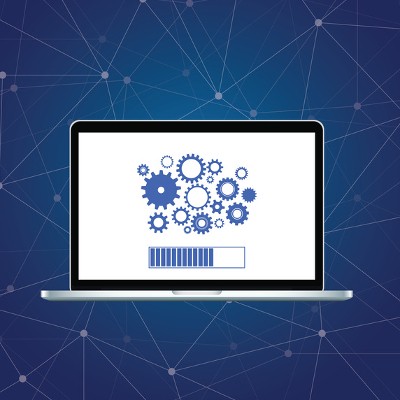In today’s business world, having a reliable way to access your data is key to your company’s success. Everything you do depends on the data you have at your disposal--so what would you do if that data was no longer available to you?
ZR Systems Blog
Efficient utility software deployment has been a priority for businesses for much of the past three decades, but today’s software developers are beginning to more frequently offer their titles as a service, giving end users the ability to utilize powerful software solutions from anywhere, for what is often a reasonable monthly payment. The dissemination of useful computing resources from the cloud, whether it’s a private cloud server, or a public cloud platform through a reputable cloud provider, can be of great benefit to your business.
Can’t find your mobile device? If you’ve taken precautions and enabled solutions designed to track the whereabouts of your device, then you’ve got no reason to panic. Of course, hindsight is 20/20, so you’ll want to make sure you activate a phone-finding solution now (while you’ve got your device in your sights).
Data breaches are common problems for businesses of all shapes and sizes. In fact, they often have huge repercussions that aren’t initially seen in the heat of the moment. How can you make sure that a data breach won’t negatively impact your business, even well after you’ve fixed the initial problem?
Keeping your workers as productive as possible is a challenge for every employer. According to a recent study by the Harvard Business Review, there is one easy that you can increase productivity: By keeping a productive worker in close proximity to other workers.
An internal IT department serves two primary purposes for businesses. The first is to keep an eye on your technology problems and resolve them. The second is to plan for the future and implement new strategies that will help your organization function more effectively. The problem for the average small business is that their IT department often doesn’t have the luxury of performing both of these tasks.
Full disclosure: we don’t recommend doing anything important, or really anything at all, on a public computer. However, we understand that sometimes life works out in an unideal fashion, and sometimes you can be stuck doing something you shouldn’t, and otherwise wouldn’t. Even in these cases, there are steps you can take to preserve your security.
What have you watched on TV lately? Actually, never mind; if you don’t want to tell us, we can just ask Vizio. Relax--we’re not actually going through with this, but the fact remains that 11 million owners of Vizio televisions had their viewing habits tracked by the manufacturer. Were you one of them?
Depending on how long you’ve had your current workstation, you might start to see performance problems. Eventually, you’ll start to see issues that could cause downtime and lead to wasted assets. Therefore, you need to have a plan in order to replace your hardware before it fails. What’s the best way to do this without breaking your budget?
How many times has this happened to you: you’ve walked back to your home or work PC after taking a break, only to find that Windows 10 installed new updates and automatically restarted? Thanks to Windows 10’s notoriously aggressive update behavior, any work that wasn’t saved was lost forever. It can be very frustrating to lose a project that you’ve spent hours on, through no fault of your own. Luckily, there are steps you can take to easily create a restart schedule.
Making sure that your company’s software solutions are up-to-date is something that should take priority, but it’s a chore that’s difficult to perform without a little help. How can you make sure that security patches and updates are always implemented, without sacrificing all of the time and effort required to do so? Even if you don’t think you need them, we promise that they are worth your time--or that of your IT staff.
It’s every business owner’s worst nightmare; they wake up to find out that their entire data infrastructure has been wiped out by some unexpected natural disaster or hacking attack. The only way to guarantee that your business’s future remains intact is to have some sort of data backup and recovery system, just in case of the worst.
Who manages the relationships that your organization has with its various vendors? Do you have someone who specifically handles this role, or is it pushed onto your already-full schedule? If this is something that takes up a significant portion of your day, vendor management (though necessary) can become a detriment. Thankfully, there is a better way to handle your vendor relationships, and it doesn’t involve stretching yourself thin.
By now you’ve surely heard about the benefits of cloud computing, but a new survey by TSO Logic might be just the proof you need to make the leap to the cloud. The survey analyzed 10,000 physical servers and 25,000 virtual machines, and the results are quite revealing!
The challenge for business owners is that there are so many different types of online threats, it borders on impossible to protect themselves from all of them. All of these threats hold limitless possibility to ruin your organization’s operations, either short-term or long-term. One of the most common threats out there is called a rootkit hack, and it’s one that you certainly don’t want to mess around with.
As a business, you focus on providing a specific good or service to your area. This means spending a considerable amount of time trying to make your organization the go-to SMB for that particular service. All organizations specialize in a certain craft, but sometimes their skills may fall short of their needs in areas that lay outside this expertise. Outsourcing is a simple way for businesses to leverage skills that aren’t part of their expertise without taking the time to learn the skill themselves, and it’s an invaluable part of any business owner’s strategy.
Millennials are entering the workforce at a considerable rate. In fact, some experts claim that millennials will soon make up at least one-third of the entire workforce. Thus, it’s important for both employers and workers from previous generations to understand how this generation thinks, acts, feels, and most important of all, works.
It would be an understatement to say that security, particularly encryption, is important while browsing the web. Though it was only recently that encryption became a major pain point for government regulation, encryption has been around for a very long time. The average user can get a taste of online encryption through the average website security certificate.
Medical technology has allowed for vast improvements in the way that conditions are treated. For example, the pacemaker allows some people with heart conditions to live longer and more comfortably. However, a European research team has concluded that even pacemakers are susceptible to being hacked, with deadly results.
The endgame for most businesses is to improve what they do and increase their profitability. While this might mean selling more products, getting more customers or clients, or a myriad of other metrics, the driving force behind your business’s operations--your employees--are crucial toward this goal.
Mobile? Grab this Article








































